He was the eldest son of Ptolemy II Philadelphus and his first wife, Arsinoe I, and came to power in 246 BC upon the death of his father. He married Berenice of Cyrene in the year corresponding to 244/243 BC.
He was responsible for the first known example of a series of decrees published as bilingual inscriptions on massive stone blocks in three writing systems.
After declaring his son his successor in 222 BC, Ptolemios III died, leaving Egypt at the peak of its political power and internally stable and prosperous.
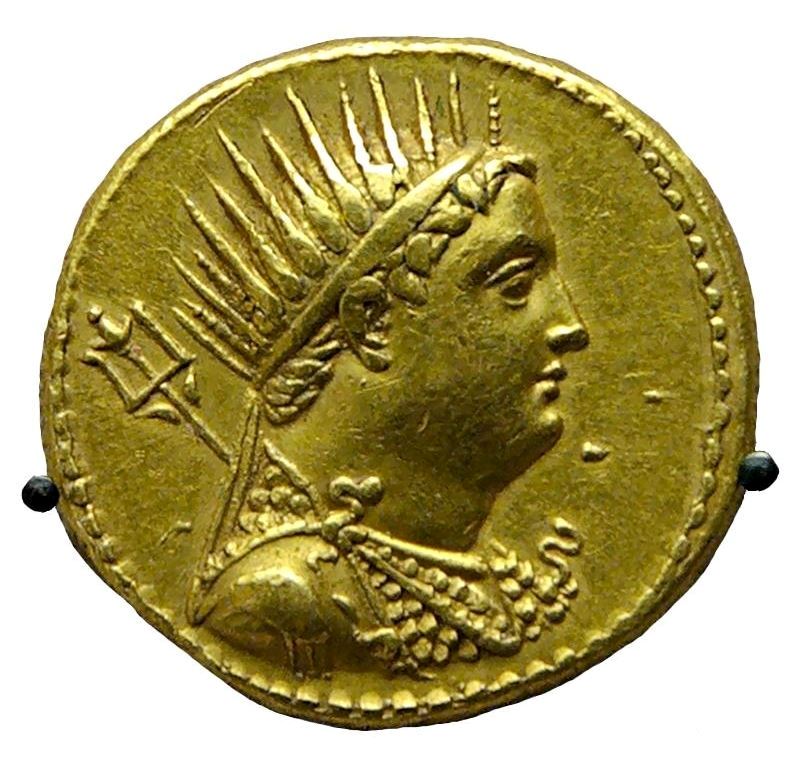
.jpg)
Reverse: ΠΤΟΛΕΜΑΙΟΥ ΒΑΣΙΛΕΩΣ, Cult statue of Aphrodite standing facing
Die Orientation: 12 H
Weight: 3.26 g
Ptolemaic Kingdom
The reverse inscription translates to: "of King Ptolemy"
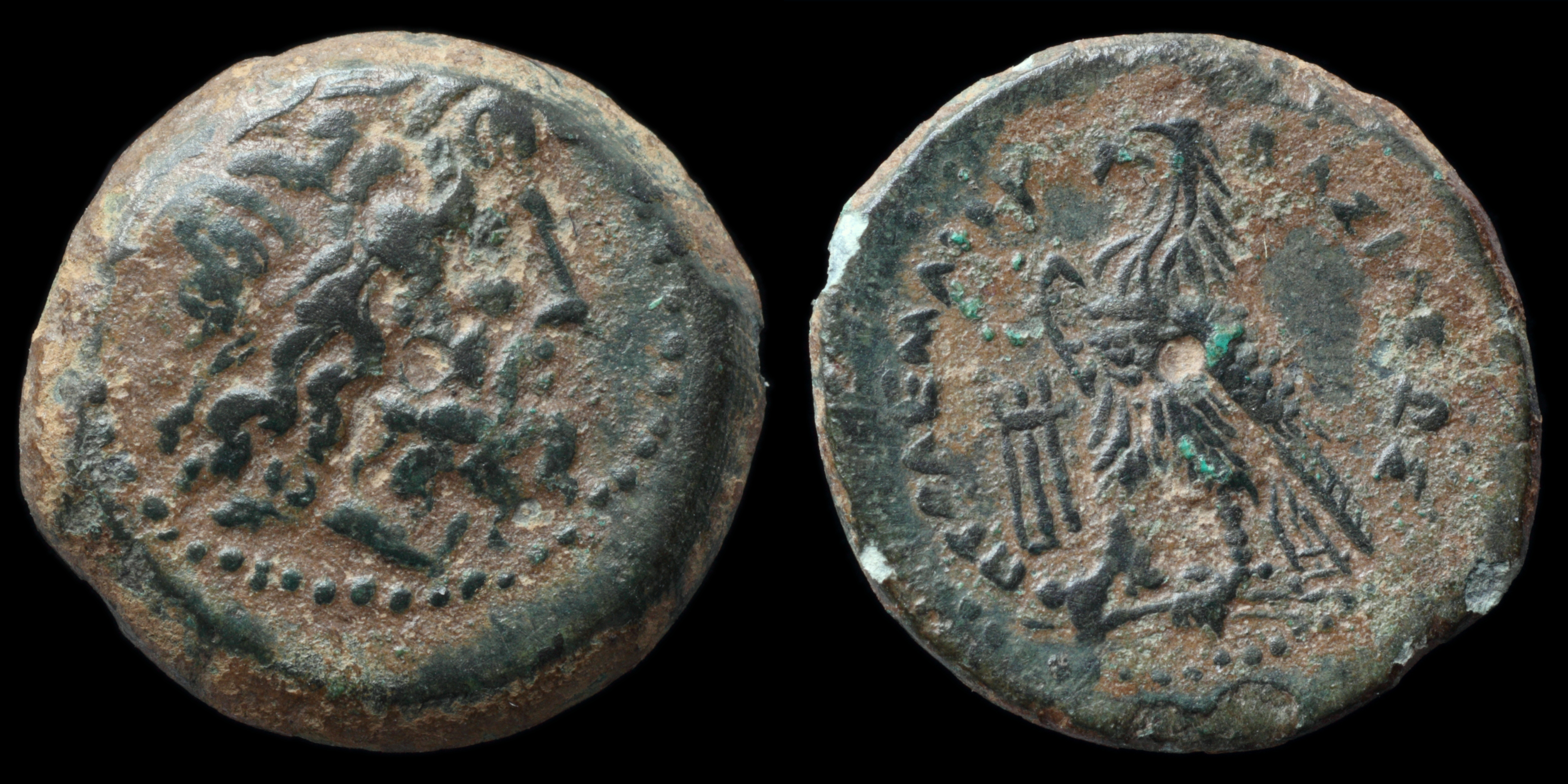
Reverse: eagle standing on thunderbolt, tripod left; ΠTOΛEMAIOY_ΒAΣIΛEΩΣ
Die Orientation: -
Weight: 3.1 g
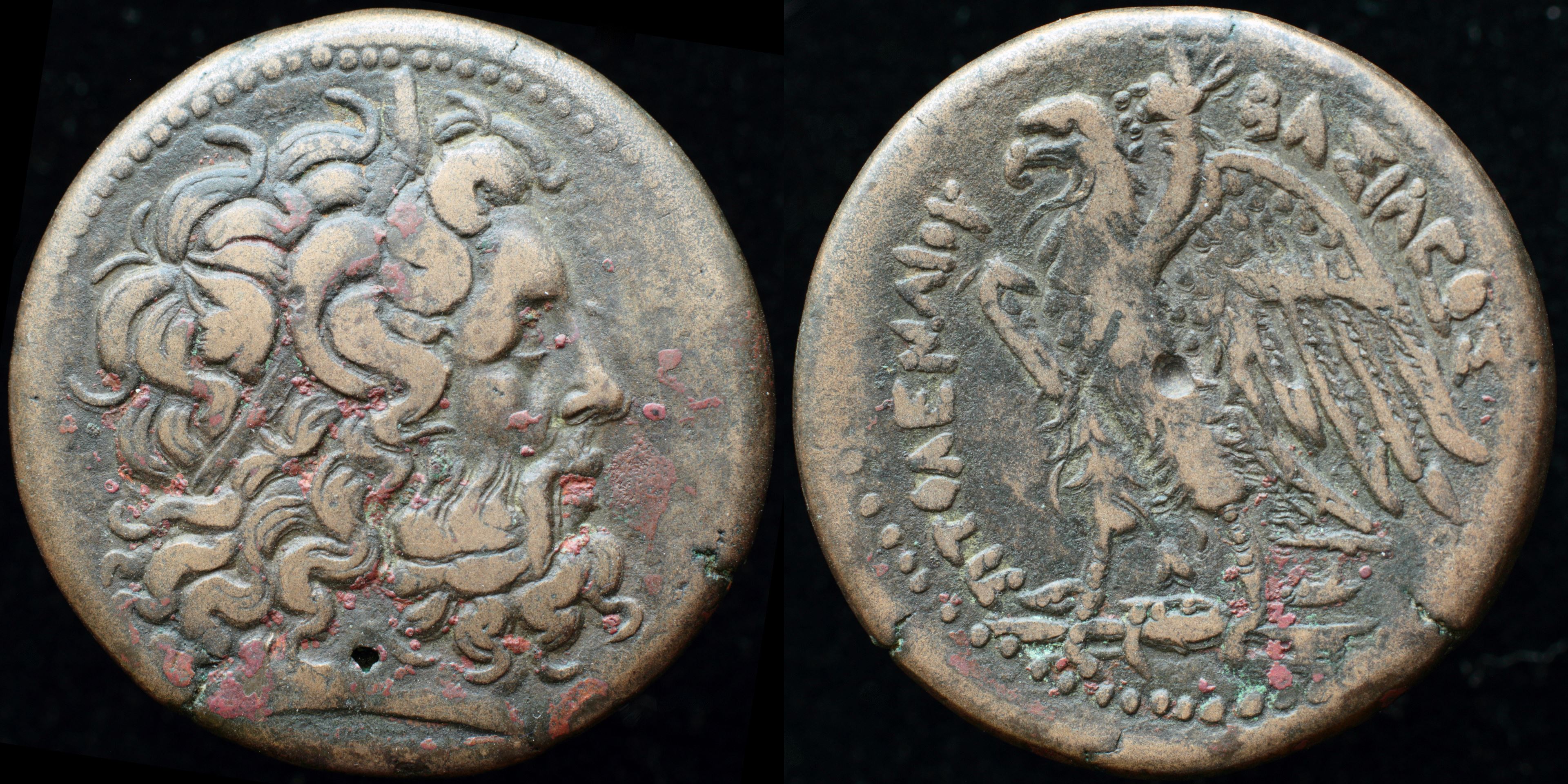
Reverse: Eagle with spread wings standing left on thunderbolt; cornucopia on shoulder; ΠTOΛEMAIOY_ΒAΣIΛEΩΣ, Λ
Die Orientation: -
Weight: 31.1 g
.jpg)
Reverse: ΠΤΟΛΕΜΑΙΟΥ ΒΑΣΙΛΕΩΣ, eagle standing left on thunderbolt, wings closed; XP monogram between legs, filleted cornucopiae in left field
Die Orientation: 11 H
Weight: 35.59 g
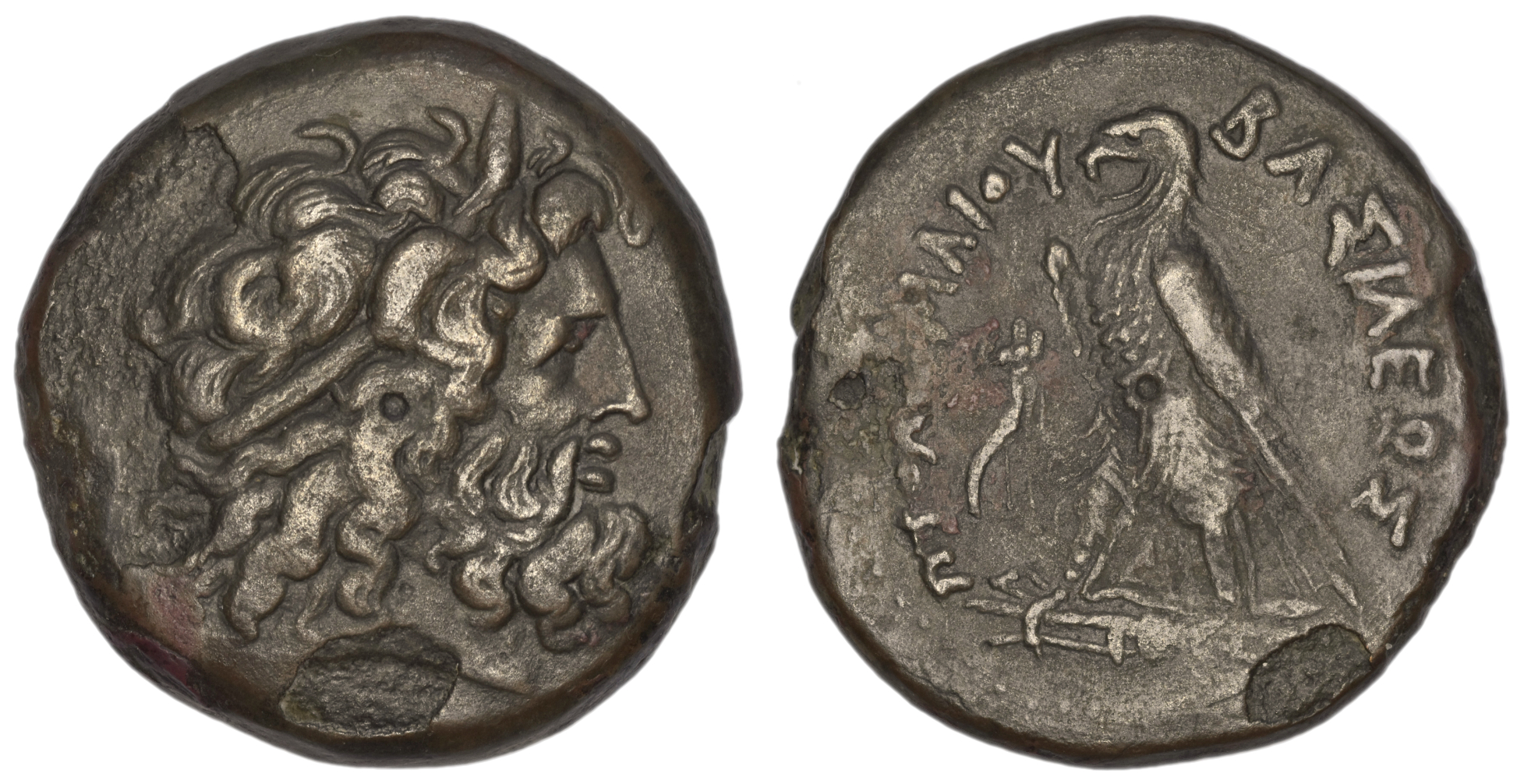
Reverse: Eagle on thunderbolt
Die Orientation: -
Weight: 51.55 g
_REDUCED(8).jpg)
Reverse: ΒΑΣΙΛΕΩΣ ΠΤΟΛΕΜΑΙΟΥ, eagle with closed wings standing left on thunderbolt, harpē to left
Die Orientation: 11 H
Weight: 4 g
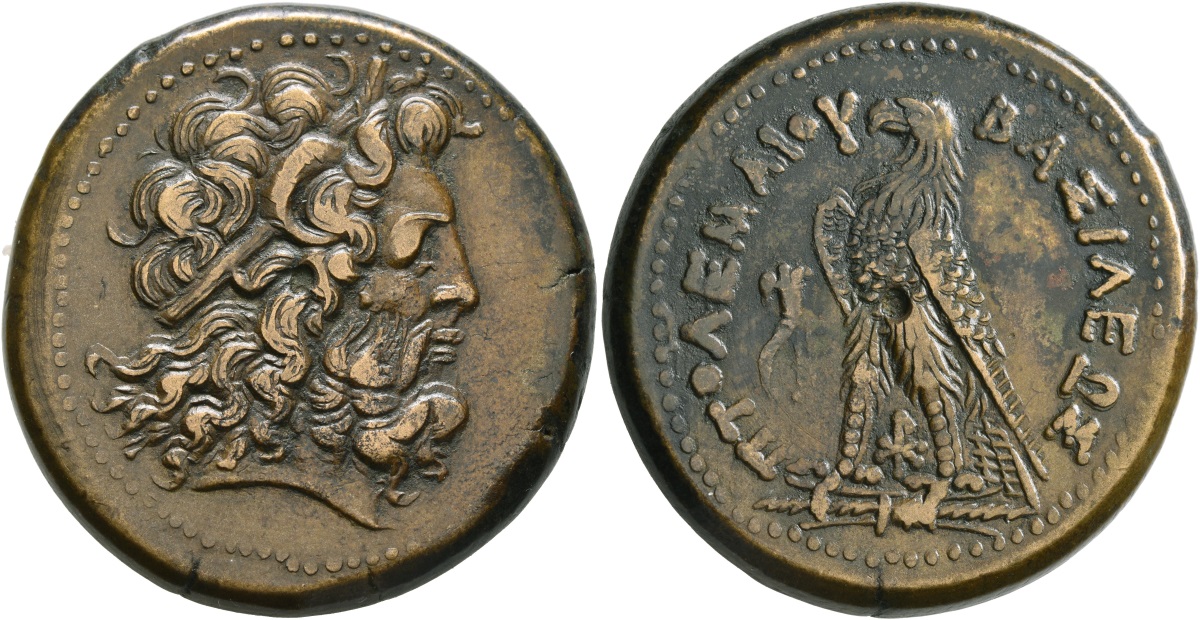
Reverse: BAΣIΛEΩΣ ΠTOΛEMAIOY Eagle with closed wings standing left on thunderbolt; to left, filleted cornucopiae; between eagle's legs, monogram of X and P
Die Orientation: 11 H
Weight: 38.15 g
